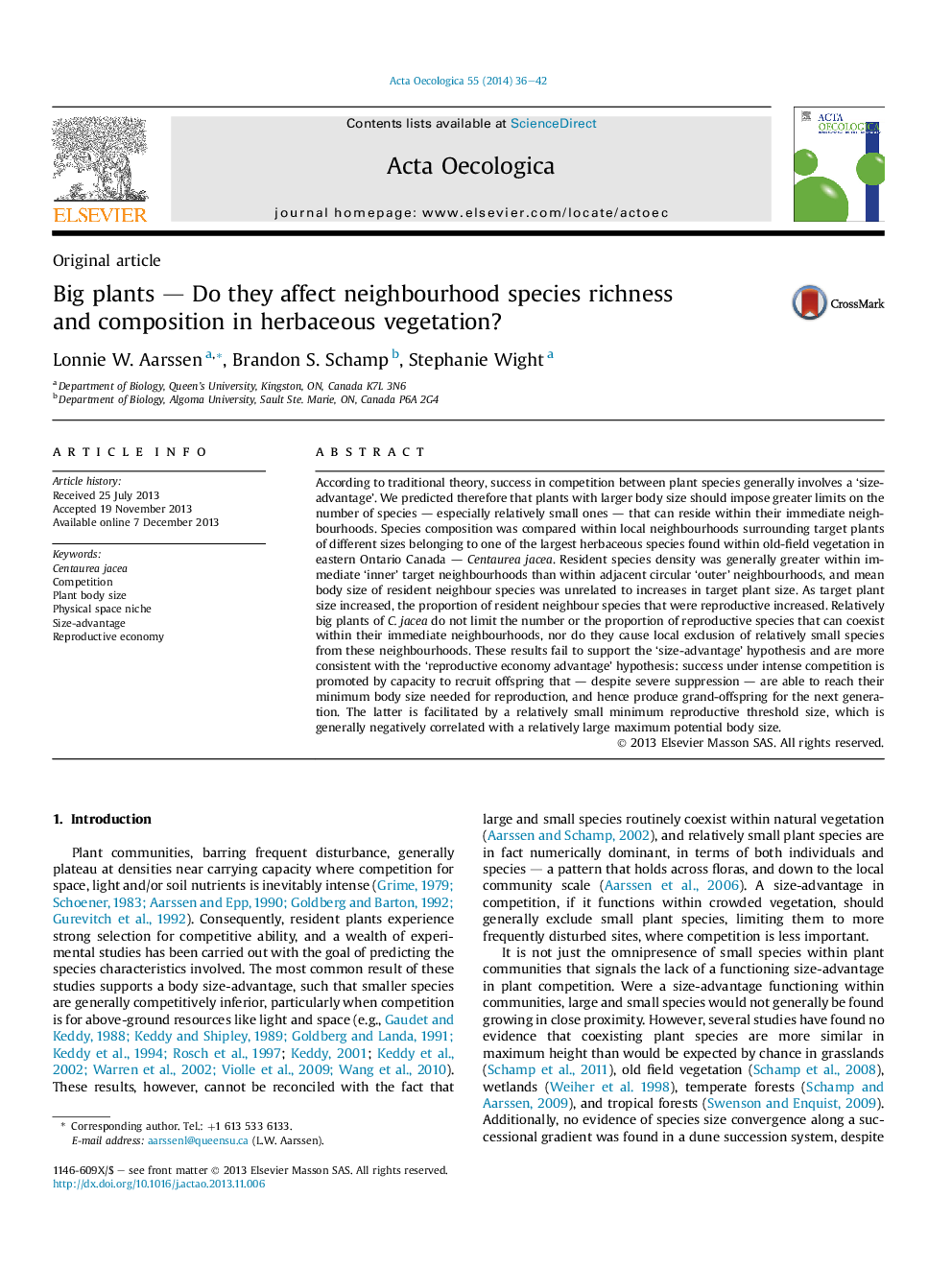| کد مقاله | کد نشریه | سال انتشار | مقاله انگلیسی | نسخه تمام متن |
|---|---|---|---|---|
| 4380747 | 1617716 | 2014 | 7 صفحه PDF | دانلود رایگان |
• Competition experiments suggest that large plants enjoy a competitive advantage.
• However, plant communities consist of both large and small species.
• We examine neighbourhoods of large target plants of Centaurea jacea L.
• Density of reproducing neighbour species increased with target plant size.
• Large C. jacea plants did not exclude nearby small plant species.
According to traditional theory, success in competition between plant species generally involves a ‘size-advantage’. We predicted therefore that plants with larger body size should impose greater limits on the number of species — especially relatively small ones — that can reside within their immediate neighbourhoods. Species composition was compared within local neighbourhoods surrounding target plants of different sizes belonging to one of the largest herbaceous species found within old-field vegetation in eastern Ontario Canada — Centaurea jacea. Resident species density was generally greater within immediate ‘inner’ target neighbourhoods than within adjacent circular ‘outer’ neighbourhoods, and mean body size of resident neighbour species was unrelated to increases in target plant size. As target plant size increased, the proportion of resident neighbour species that were reproductive increased. Relatively big plants of C. jacea do not limit the number or the proportion of reproductive species that can coexist within their immediate neighbourhoods, nor do they cause local exclusion of relatively small species from these neighbourhoods. These results fail to support the ‘size-advantage’ hypothesis and are more consistent with the ‘reproductive economy advantage’ hypothesis: success under intense competition is promoted by capacity to recruit offspring that — despite severe suppression — are able to reach their minimum body size needed for reproduction, and hence produce grand-offspring for the next generation. The latter is facilitated by a relatively small minimum reproductive threshold size, which is generally negatively correlated with a relatively large maximum potential body size.
Journal: Acta Oecologica - Volume 55, February 2014, Pages 36–42
